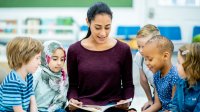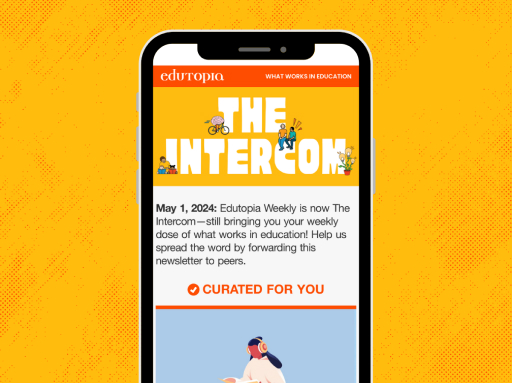9 Picture Books for Preschoolers That Celebrate Diversity
Books about diverse families teach young children to appreciate—and celebrate—differences in race, ethnicity, and sexual orientation.
Your content has been saved!
Go to My Saved Content.Every June 12, America celebrates Loving Day, the commemoration of the 1967 Supreme Court ruling that overturned anti-miscegenation laws in the United States, paving the way for interracial marriage. The day is named after the plaintiffs in that case, Mildred and Richard Loving, a Black woman and White man who had originally been jailed because their marriage was illegal in the state of Virginia.
Because I am one half of an interracial couple, this day is close to my heart. My wife is a Nigerian doctor, and since our marriage last year, there have been many moments when I’ve been forced to rethink my own biases and learn about my own privilege—not just as the White husband of a Black woman, but also as a White teacher to Black students and as the future father of Black children.
The first time I ever saw an interracial family portrayed in any piece of media was during my first year of teaching in 2019 when I found a beat-up copy of Arnold Adoff’s black is brown is tan, published in 1973. I took to the book instantly because of its loving portrayal of an interracial family.
As a preschool teacher, I teach a unit on families every school year, and while I was happy to see my own reality reflected in a book, I also know there are many families that are too often ignored in picture books. When was the last time you opened a book for children that portrayed a happy, loving Egyptian-American family? A modern Cheyenne family? A family with a nonbinary gender member? A family with a trans parent? A family with two moms? Unfortunately, a 2018 survey of children’s literature found that a disproportionate number of children’s books still feature White protagonists, and the publishing industry itself also shows a startling lack of diversity.
As teachers and consumers, we can’t control what books are out there for our preschool students. However, we can control what we put in front of them. We should reject the idea that a White, heteronormative, upper-middle-class family is “normal” and make sure that all our students feel that the concept of family is universal—no matter what your family looks like. Here is a list of titles I have found useful.
9 Books That Celebrate Families
Let’s Eat!, by Ana Zamorano and Julie Vivas: Having dinner together is an important part of many family traditions, and Let’s Eat! portrays the bustle of having a large family. Zamorano’s playful prose weaves together Spanish and English as the matriarch of the family constantly laments that every night someone in their family is missing dinner—whether it’s the younger siblings playing hide-and-seek or elders partaking in an intense domino game. And the illustrations look delicious. This book perfectly captures the joy and energy of gathering for a family meal.
Bintou’s Braids, by Sylviane A. Diouf: This story highlights the importance of intergenerational family relationships. Bintou is a young girl in Senegal who longs to wear the elaborate hairstyles reserved for grown women in her community, but with the help of her family she learns to be patient and enjoy being a child.
Chester Bear, Where Are You?, by Peter Eyvindson and Wendy Wolsak-Frith: Indigenous people can often be relegated to another era, too often seen as existing only in the past. This book by Saskatchewan author Peter Eyvindson is a typical “lost teddy bear” story with a Native American family in a modern environment. As in many families, the older brothers are pests and the parents are always busy. Wendy Wolsak-Frith’s illustrations of the home are the only hint of the family’s Native American roots, and the characters are engaging and easy to warm up to.
Julián Is a Mermaid, by Jessica Love: When Julián tells his abuela that he wants to be a mermaid, she disapproves at first but quickly changes her mind and supports him. On the surface, this book simply challenges gender norms about what boys can do, but underneath all of that, it’s a story about the loving relationship between a grandmother and her grandson.
Mommy’s Khimar, by Jamilah Thompkins-Bigelow and Ebony Glenn: This book is about the adoration that a young Muslim girl has for her mother and how her mother’s khimar, or headscarf, serves as a tangible form of that connection.
The Different Dragon, by Jennifer Bryan and Danamarie Hosler: While this book may run a little long for preschoolers, it’s worth reading even if you must do it in two sittings. In this story about a bedtime story, Noah and one of his moms create a fantasy world. The story touches on the importance of acceptance and mental health while also normalizing a queer relationship and throwing in some dragons to boot!
It Feels Good to Be Yourself: A Book About Gender Identity, by Theresa Thorn and Noah Grigni: This book might feel a little dry for preschoolers, but it breaks down the concepts of gender identity to such simple terms that anyone can understand. With the help of some beautiful illustrations, it’s a great introduction to this topic for preschoolers.
Big Red Lollipop, by Rukhsana Khan and Sophie Blackall: This is a book about one of the most universal human experiences: how awful younger siblings can be. It tells the story of Rubina, a young girl who’s a Pakistani immigrant. She’s been invited to her first birthday party, and chaos ensues when her mom insists that Rubina take her younger sister along.
Yo Soy Muslim: A Father’s Letter to His Daughter, by Mark Gonzales and Mehrdokht Amini: Written as a letter from a father to a daughter, this book is a beautiful expression of love from a parent to a child. While it addresses specific themes related to the family’s religion and Latinx heritage, it also gets to the heart of a parent encouraging their child to be strong and proud of who they are.
While this list is neither complete nor comprehensive, I hope these books start you on the journey that black is brown is tan started for me: helping all children understand the beauty in their family.

